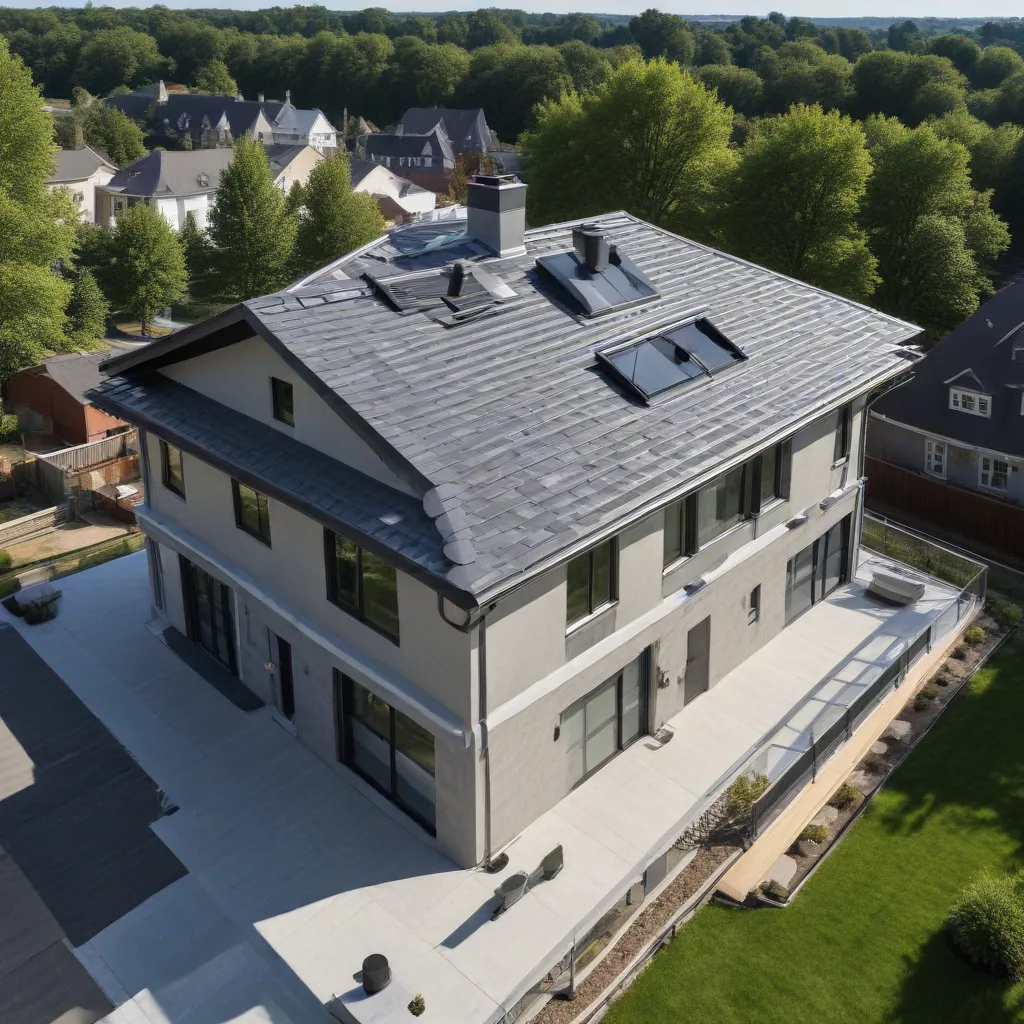
As an experienced roofing specialist, I know that designing an energy-efficient and comfortable roof is crucial for any building, whether it’s a residential home or a commercial structure. The roof is the primary interface between the interior and exterior environments, so getting the roof right can make a significant difference in a building’s overall energy performance and occupant comfort.
Roof Design Considerations
Energy Efficiency
The roof plays a vital role in a building’s energy efficiency. Proper thermal insulation and effective ventilation are key factors in optimizing the roof’s energy performance.
Insulation is crucial for minimizing heat transfer between the interior and exterior. By selecting the right insulation material and ensuring adequate coverage, you can significantly reduce the energy needed for heating and cooling. This not only saves money on utility bills but also reduces the building’s carbon footprint.
Ventilation is equally important, as it helps regulate airflow and manage moisture levels within the roof assembly. Proper ventilation can prevent issues like mold, mildew, and premature deterioration of roofing materials. Strategically placed vents, ridge vents, and soffit vents can create a balanced airflow that enhances the roof’s energy efficiency.
Comfort and Livability
The roof’s design also impacts the overall comfort and livability of a building. Effective temperature regulation and moisture management are essential for creating a comfortable indoor environment.
A well-designed roof should help maintain a stable indoor temperature, regardless of the outdoor conditions. This can be achieved through the use of reflective surfaces, insulation, and ventilation strategies that minimize heat gain and loss.
Moisture management is crucial, as excess moisture can lead to a host of problems, from structural damage to indoor air quality issues. Proper underlayment installation, integrated flashing systems, and effective drainage solutions are essential for keeping moisture at bay and ensuring a comfortable, healthy living or working environment.
Roofing Materials and Systems
Roofing Types
There are various roofing options available, each with its own unique characteristics and performance attributes. Pitched roofs, such as those with asphalt shingles, metal panels, or clay/concrete tiles, are common in residential and some commercial applications. Flat roofs, often found on commercial and industrial buildings, can utilize single-ply membranes, built-up roofing, or spray polyurethane foam.
The choice of roofing material should be based on factors like climate, building design, budget, and aesthetic preferences. Each type of roof has its own advantages and disadvantages in terms of durability, energy efficiency, and maintenance requirements.
Roofing Components
In addition to the primary roofing material, the roof assembly includes various other components that work together to create a functional and long-lasting system. These include underlayment, flashing, ventilation systems, and roof accessories like gutters and downspouts.
The underlayment, for example, is a critical layer that provides a secondary barrier against water penetration and enhances the overall performance of the roofing system. The selection of the right underlayment material can have a significant impact on the roof’s longevity and the building’s energy efficiency.
Roof Orientation and Placement
Solar Exposure
The orientation and placement of the roof can greatly influence its energy performance. Factors like solar radiation, shading, and wind patterns all play a role in determining the optimal roof design.
Maximizing the roof’s exposure to sunlight can be beneficial in colder climates, as it can help reduce heating loads. Conversely, in warmer climates, minimizing solar heat gain through strategic shading, reflective coatings, or overhangs can significantly improve the building’s cooling efficiency.
Site Considerations
The building’s location and surrounding landscape features can also impact the roof’s design. Prevailing wind patterns, for instance, may require specific ventilation strategies or the incorporation of wind-resistant roofing materials. Nearby trees, buildings, or other structures can create shading patterns that influence the roof’s energy performance and the placement of solar panels or other roof-mounted systems.
Energy-Saving Roof Design Strategies
Passive Cooling
One of the most effective ways to enhance the energy efficiency of a roof is through the use of passive cooling strategies. This includes the selection of reflective roofing materials that minimize solar heat absorption and the integration of radiant barriers that help redirect thermal radiation.
Reflective roofing products, such as light-colored asphalt shingles, metal panels, or single-ply membranes, can significantly reduce the amount of heat absorbed by the roof, leading to lower cooling loads and reduced energy consumption. Radiant barriers, typically installed in the roof assembly, can further enhance the roof’s ability to reflect heat and improve overall thermal performance.
Active Heating and Cooling
In addition to passive cooling strategies, some roofs can incorporate active heating and cooling systems. This includes the integration of solar photovoltaic (PV) panels that generate renewable energy, as well as roof-integrated heating and cooling systems that leverage the roof’s surface area to improve the building’s overall thermal management.
Solar PV panels not only offset the building’s energy consumption but also contribute to the roof’s overall energy efficiency by shading the underlying roofing materials and reducing heat absorption. Roof-integrated systems, such as solar thermal collectors or geothermal heat pumps, can further enhance the roof’s ability to actively manage the building’s heating and cooling needs.
Ultimately, the design of an energy-efficient and comfortable roof requires a holistic approach that considers the building’s specific needs, the local climate, and the available roofing materials and technologies. By carefully balancing these factors, you can create a roof that not only looks great but also delivers maximum energy savings and occupant comfort.
For more information on genuine roofing solutions, please visit www.genuineroofsystems.com.

























